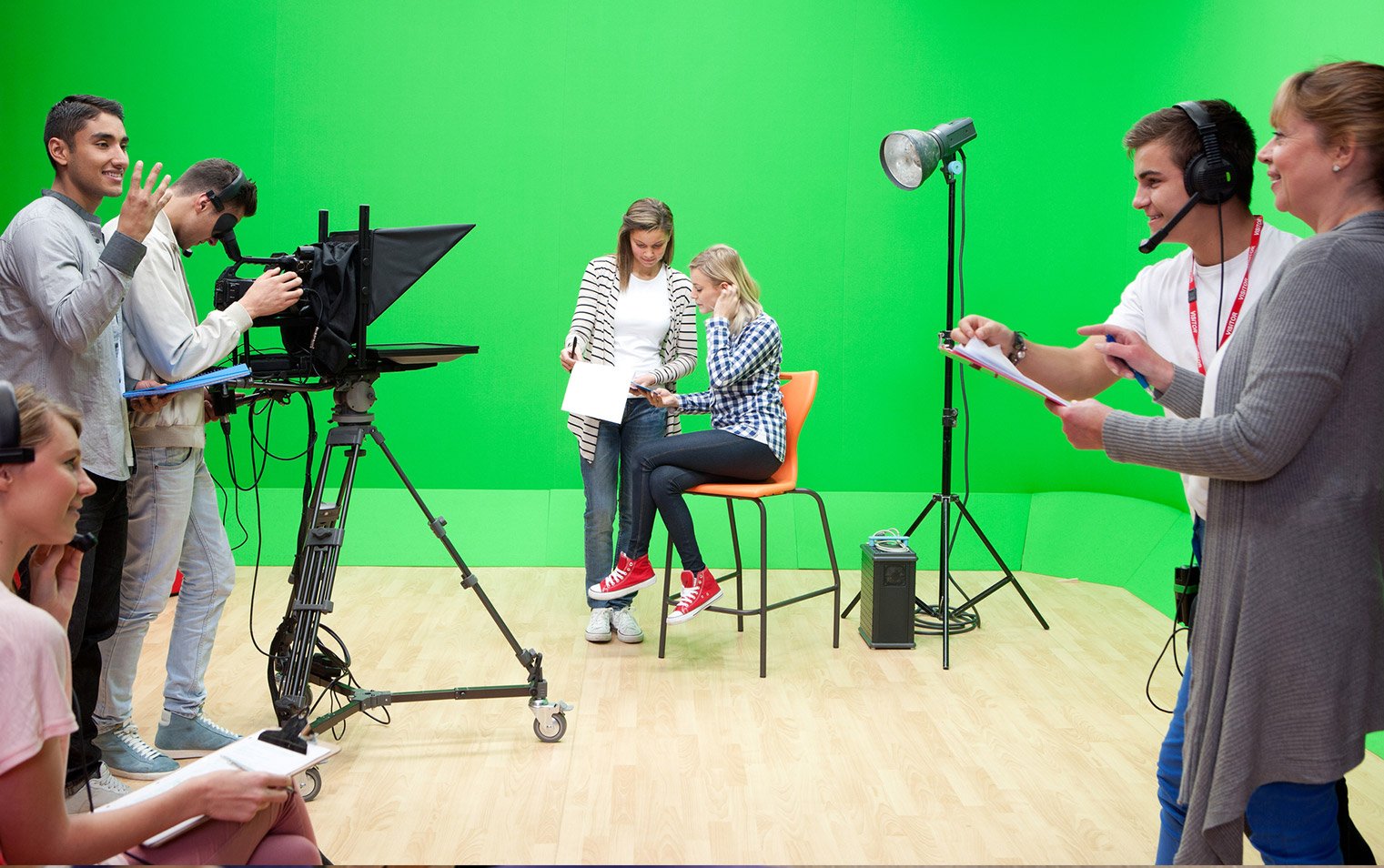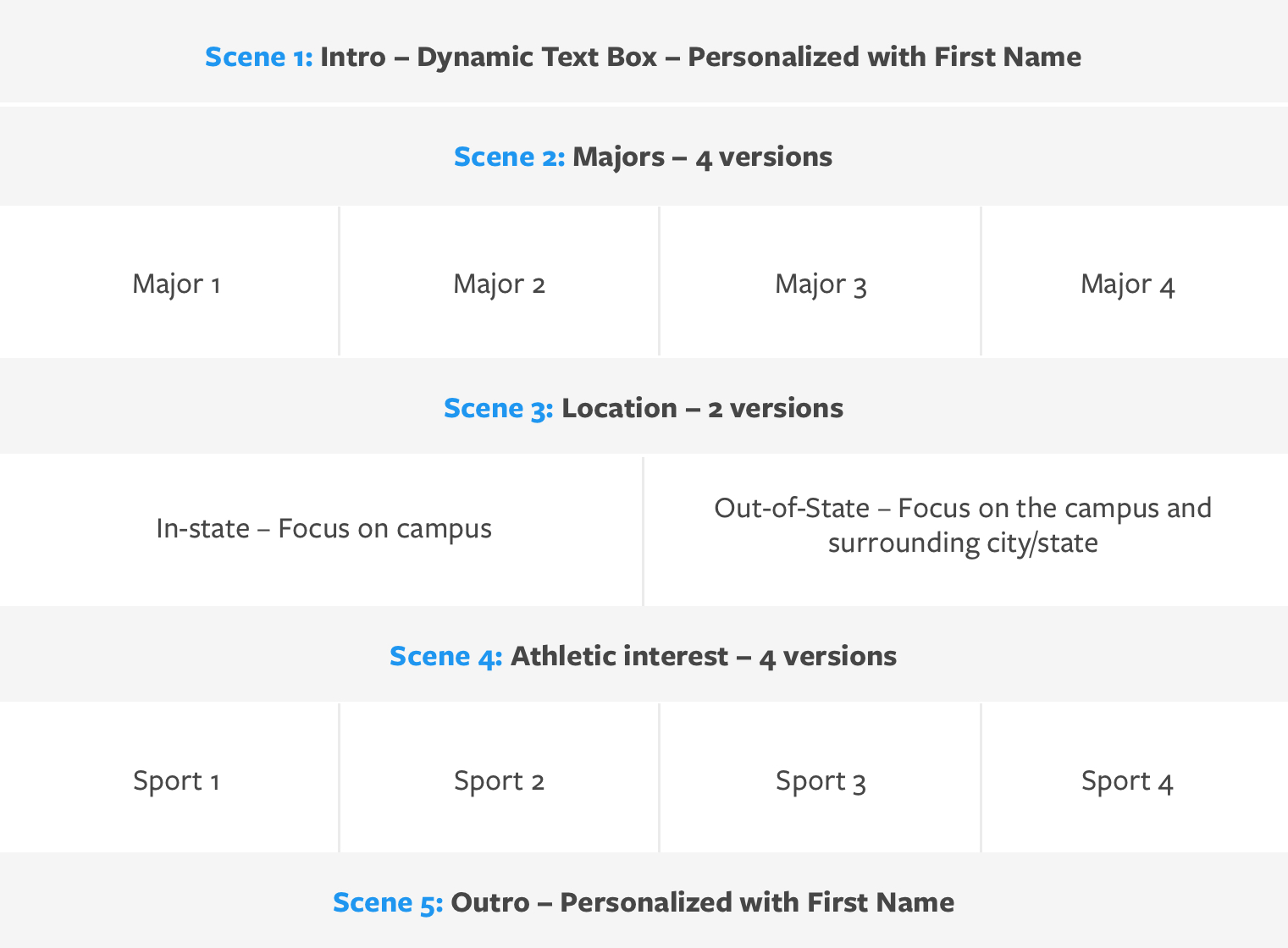
Marketing for colleges and universities is a unique undertaking but recognizable too. You have to build a brand, communicate its values, and sell your product: in this case, academic programs and a coming-of-age experience, to name just two. And building a brand requires great storytelling — what better medium than video?
I’ve been working in higher education marketing for about twenty-five years, all while using video as the medium of choice to help universities shape the narrative for their special offerings. And while my role has been that of an outside creative partner, I believe now, more than ever, schools need to commit resources to in-house video production just as they would for other communication roles such as writing.
The in-house video imperative
Why video? It’s second nature to Gen Z. They live and breathe it every day. They expect it in their communications, just like they expect water to flow out of the tap. That’s why university marketing and admissions departments need to develop in-house competency to generate the vast sums of content a college needs to keep its many social media feeds alive and stocked with great content, be it that surprise visit from a celebrity alum, the rainbow that spans the quad after a spring rain, or when your university president agrees to do carpool karaoke with members of the student government.
These are moments that need boots on the ground, a kind of embedded journalism that an external video production company can’t capture because it’s not on site.
Joey Schmidt, executive director of marketing communications for New York University admissions, shared via email: “We continue to leverage agencies and production companies to produce content with higher production values, but we are also seeing high engagement with the videos that are produced in a more ‘professional DIY-style’ manner.”
“Gen Z does not like to be marketed to,” he continues, “And so student-generated stories are often a very effective and an honest way to communicate the ‘real’ NYU experience and lifestyle. This content serves to enrich our student voice on social media and also gives our student creators an opportunity to develop video/digital storytelling skills using channels such as Instagram Stories and Facebook Live, refine writing and blogging skills, and strengthen their portfolio for future internships and jobs.
Is there any point to having a YouTube channel if nobody posts content that drives engagement through clicks, views, and watch time?
So, whether you hire a graduate assistant from the film department, an undergrad who simply loves social media, or a full-time, on-campus, professional videographer, the aim will be the same. Capture the essence and spirit of life on campus and synthesize it through video for sharing on your platform of choice: YouTube, Snapchat, Instagram, Facebook, Twitter, or LinkedIn. The important point is to develop a strategy that results in content published on a predetermined schedule with enough time between each release.
The tools your content creators use will vary. It could be their own smartphones or 35mm SLRs accompanied by modern, motorized, hand-held Steadicam rigs. The bottom line is that your creators fulfill an important role that make your investment on social media platforms worthwhile. I mean, is there any point to having a YouTube channel if nobody posts content that drives engagement through clicks, views, and watch time?
Why strong production values matter
Besides seeing video all over their social media, tomorrow’s college students are used to content with high production values. Most television series are visually indistinguishable from a cinematic release, and while it’s true that potential college applicants are also used to content with low production values (think of Tik Tok), as an institution of higher education, expectations around the quality of your content is necessarily higher.
For instance, if you produce an anchor video for your university, it should exhibit a director’s aesthetic touches and possess a compelling story with a beginning, middle, and end. It should also be shot on high-end cameras with quality lenses. Have excellent sound and music quality. Exhibit editing, finishing, and graphics at a professional level and, most importantly, generate an emotional response in the viewer.
And if you’re talking about making a commercial that’ll run on TV, well, let’s just say that we have to dedicate the time and budget to properly make an ad that’ll stand up against multimillion-dollar spots for Apple and Hotels.com that may follow it on the screen. You may still need an external production company to execute these types of projects, but your internal team can help capture the b-roll and other footage that’ll make these videos engaging and authentic.
Don’t forget personalization
For Gen Z students, personalization is a fact of life. Your Pandora playlist makes suggestions based on what you’ve already played and what other people who’ve listened to those same songs also liked. Your Netflix account displays algorithm-selected shows and movies for you. And, of course, your Amazon shopping cart is hard at work coming up with suggestions just for you. Driven by demographic and behavioral analytics, as well as survey data, CPG companies have deftly used what they know about customers to create experiences that are personal and contextual.
Video is moving to personalization as well. Nike, for example, emailed videos to each runner who participated in the 2015 10k Paris with their time (and whether it beat their personal best), as well as a photo of them interspersed with race footage. Many platforms exist to create a link between what we already know about a student through data and how your school may be the right fit for them.
Let’s look at a framework for creating personalized video for higher education.
A personalized video process
- Build data segments
- Create a video content plan and capture your content
- Execute the video in a personalization platform
1. Building your segments
Let’s take an example of a female student who lives 100 miles from a campus in California. She’s interested in biology and plays lacrosse. We’ve identified four points of personalization that may be extracted from a student information system or CRM:
- First name
- In-state vs. out of state
- Major
- Athletic interest
These data points help us plan our content needs, so we can establish the narrative relative to an user’s demographics and interests. For example, we'll require a video segment that relates to each major, or if there are just too many majors, we might break it down by school of business, school of engineering, and so on. The same as true for athletics. The important point is that we use what we know about the student to make a bespoke video experience.
2. Building your video content plan
So now that you’ve established your points of personalization, you need to put them into a plan. The following is an effective framework I’ve used for creating personalized video. It breaks the video down into scenes, identifying whether it’s personalized and how many variations of it need to be produced.
3. Execute the video in a personalization platform
When it comes to bringing all the pieces together, there are several solutions for making it happen. There are do-it-yourself applications that give you a turnkey solution for executing all the steps from loading the data and personalization points to ingesting the video segments and applying variables to graphic templates. The most popular solutions in this category include Vidyard, Idomoo, and Innovid.
There are also “roll your own” platforms that allow you to build custom solutions and integrate directly with your CRM, such as Impossible Software, which calls itself, “The world's leading realtime video personalization platform.”
It’s all about the connection
But marketers shouldn’t get caught up in technology alone. We’re talking about delivering on a genuine expectation from your audience: that you’ll use video to tell your story, your way. If you’re just saying you have “convenient, evening classes for adults,” you’re not saying anything they haven’t already heard.
In addition, there’s the global reach that video gives you, empowering you to build connections with students everywhere. Schmidt underscores this point: “While we encourage prospective students to visit and experience our campuses first-hand, online video gives us the ability to orient students from around the world to our campuses and academic programs in a really impactful way.” In other words, own your story, make it authentic, and make it with video.







